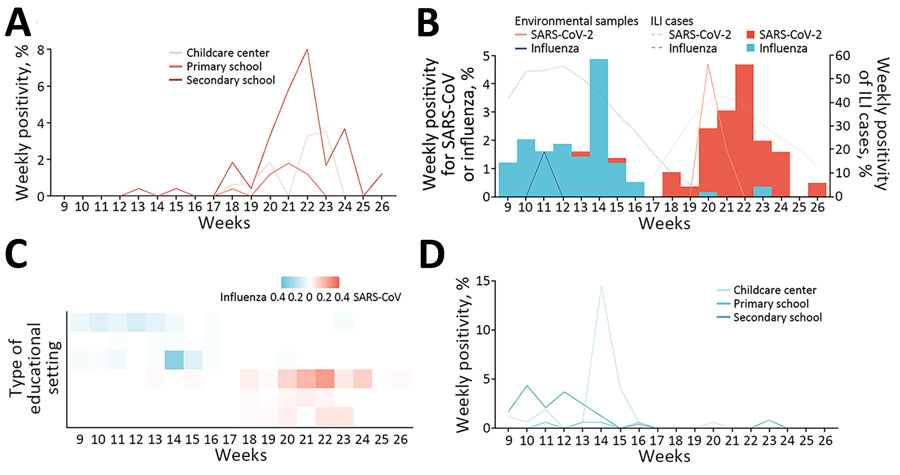Volume 30, Number 9—September 2024
Research
Infection Rates and Symptomatic Proportion of SARS-CoV-2 and Influenza in Pediatric Population, China, 2023
Figure 3

Figure 3. Circulation of SARS-CoV-2 and influenza during the spring/summer school term, February–June 2023, in study of infection rates, symptomatic proportion, and age-dependent risk profiles of SARS-CoV-2 and influenza in pediatric population, China, 2023. The term secondary schools refers to both junior secondary schools and high school. A) Weekly SARS-CoV-2 positivity by type of educational setting. B) Weekly SARS-CoV-2 and influenza positivity among study participants (bars) and from environmental sources (solid lines) and cases of ILI (dotted lines). Scales for the y-axes differ substantially to underscore patterns but do not permit direct comparisons. C) Relative intensity of SARS-CoV-2 and influenza by setting (bottom to top, childcare centers, primary schools, and secondary schools). D) Weekly influenza positivity by type of educational setting. ILI, influenza-like illness.
1These authors contributed equally to this article.